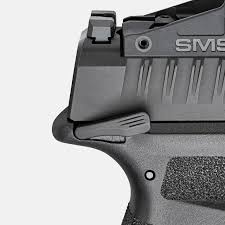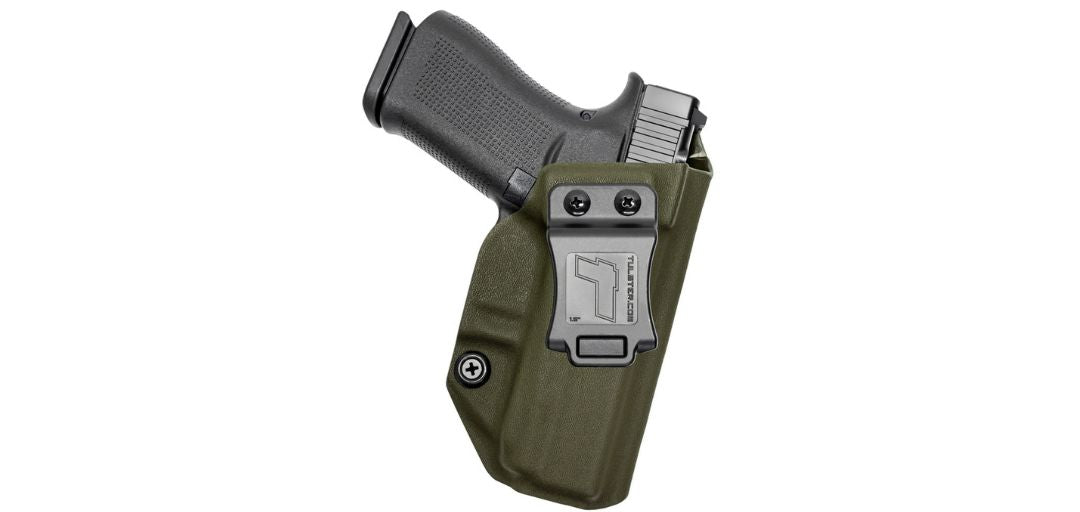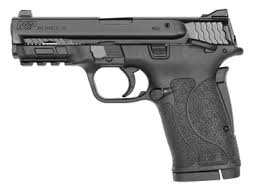When it comes to concealed carry, simplicity and reliability are often at the forefront of what many carriers prioritize. For this reason, firearms without a manual safety have become popular among concealed carry enthusiasts who prefer a straightforward, "draw-and-fire" approach. In this blog, we will explore everything you need to know about carrying guns without manual safety features, from specific gun models to training considerations.
1. Thorough Evaluations of Concealed Carry Guns Without Manual Safety Features
Firearms without a manual safety are designed to make concealed carry simpler. By eliminating the manual safety mechanism, users can rely on point-and-shoot functionality without worrying about disengaging an additional feature in a high-stress situation. Here are some of the key benefits of concealed carry guns without manual safety:
- Simplicity: Without a manual safety, there is one less step to worry about when drawing the gun. This makes the operation intuitive, especially in situations where split-second decisions are critical.
- Reliability: Without an extra mechanical component like a manual safety, there is reduced risk of failure. The design and engineering of modern striker-fired pistols without safeties are highly reliable, ensuring consistent operation.
- Ease of Use: Guns without manual safeties are often easier for beginners, as they allow users to focus more on aiming and trigger control. This streamlined approach is particularly useful for new concealed carriers who need confidence in their weapon’s simplicity.
2. Comparison Analysis of Different Handgun Options Without Manual Safety
To help you choose the right firearm for concealed carry without a manual safety, we compared some popular options based on ergonomics, trigger characteristics, and suitability:
| Handgun Model | Ergonomics | Trigger Characteristics | Suitability for Concealed Carry |
|---|---|---|---|
| Glock 19 | Versatile, fits various hand sizes | 5.5 lb consistent trigger pull, crisp reset | Great for IWB carry, compact but with decent capacity |
| Sig Sauer P320 | Customizable grip modules, ergonomic | Smooth striker-fired trigger, consistent pull | Modular design, easily concealed with compact grip |
| Smith & Wesson M&P 9C | Comfortable grip with aggressive texture | Crisp trigger with audible reset, relatively light | Compact and well-balanced for easy concealment |
| Springfield Hellcat | Textured grip, suitable for small hands | Flat-faced trigger, smooth pull | Extremely compact, high capacity for subcompact size |
| Ruger Security-9 Compact | Slim with decent grip size | Short trigger pull with positive reset | Affordable, easily concealable for most carriers |
3. Insights on the Best Concealed Carry Guns Without Manual Safety
-
Glock 19: The Glock 19 is a highly popular choice for concealed carry, and its lack of manual safety is one of its defining features. The consistent trigger pull and straightforward operation make it a great choice for carriers who want a dependable sidearm without any complications. It strikes the perfect balance between size, capacity, and ease of use.
-
Sig Sauer P320 Compact: The P320 is another excellent choice, offering modularity that allows users to switch out grip modules to better fit their hands. This adaptability, combined with a reliable trigger and no manual safety, makes it a strong contender for those looking for customization options in their concealed carry.
-
Springfield Hellcat: Known for being extremely compact and boasting an impressive capacity, the Springfield Hellcat is a great choice for those who want to carry discreetly. The lack of manual safety keeps it simple while allowing users to quickly engage in a defensive scenario.
4. Training and Handling Considerations for Concealed Carry Guns Without Manual Safety
When carrying a gun without a manual safety, it’s essential to have a clear understanding of how to handle and train with your firearm to maximize safety and efficiency. Here are some considerations:
-
Trigger Discipline is Crucial: Since there is no manual safety to act as an intermediary, keeping your finger off the trigger until ready to fire is of utmost importance. Training should emphasize trigger discipline as the primary safety mechanism.
-
Holster Selection: A high-quality holster is essential for guns without a manual safety. The holster should completely cover the trigger guard, preventing anything from accidentally engaging the trigger. An Inside-the-Waistband (IWB) holster or an Appendix IWB holster is often recommended for comfortable and secure concealment.
-
Training for Smooth Draws: Training with a gun that lacks a manual safety involves working on smooth, safe draws that emphasize speed and proper grip. Practicing drawing from your carry holster regularly will help build the muscle memory needed for quick access without compromising safety.
-
Situational Awareness: When carrying without a manual safety, being aware of your surroundings and understanding your environment is key. It’s important to limit activities that could lead to unintended contact with the firearm or cause the firearm to fall from its holster.
5. Real-World Feedback and Experiences from Users of Concealed Carry Guns Without Manual Safety Features
To get a well-rounded view of carrying without a manual safety, we reached out to experienced carriers for their feedback. Here’s what they had to say:
-
Speed and Simplicity: Many users appreciated the simplicity and speed of using a firearm without a manual safety. One user noted, "I carry a Glock 19 because I don’t want to have to think about disengaging a safety in a life-threatening situation. It’s simple—draw, aim, fire."
-
Holster Matters: A recurring theme among users was the importance of the holster. "Carrying without a manual safety is safe as long as you invest in a good holster," said one carrier. "I make sure that my holster has solid retention and covers the trigger guard completely."
-
Training Pays Off: Another key insight from users is that proper training builds confidence. One individual shared, "When I first started carrying my Sig P320, I was nervous about the lack of a safety. After extensive training on trigger control and ensuring my holster was secure, I’m now more confident than ever carrying it."
-
Suitable for EDC (Everyday Carry): Many carriers found that firearms without manual safeties were more suitable for everyday carry. "I carry a Springfield Hellcat every day," shared one user. "The less I have to worry about engaging or disengaging safeties, the better I feel. It’s one less thing to think about if I need to defend myself."
Conclusion
Choosing whether or not to carry a firearm with a manual safety is ultimately a personal decision. Guns without manual safety features offer simplicity, reliability, and ease of use, which makes them a popular choice among concealed carriers who prioritize quick action in a defensive situation. However, carrying without a manual safety means you must be vigilant about trigger discipline, holster selection, and training to ensure maximum safety and efficiency.
Whether you decide on a Glock, Sig Sauer, Springfield, or another reliable firearm, remember that training and preparation are key to becoming confident with your choice of concealed carry gun. To learn more about concealed carry options, be sure to check out our other blog posts like Best Concealed Carry Practices for Beginners and How to Choose the Right Holster for Your Firearm.
Disclaimer: Always adhere to local laws regarding concealed carry and seek professional training before carrying a firearm.



